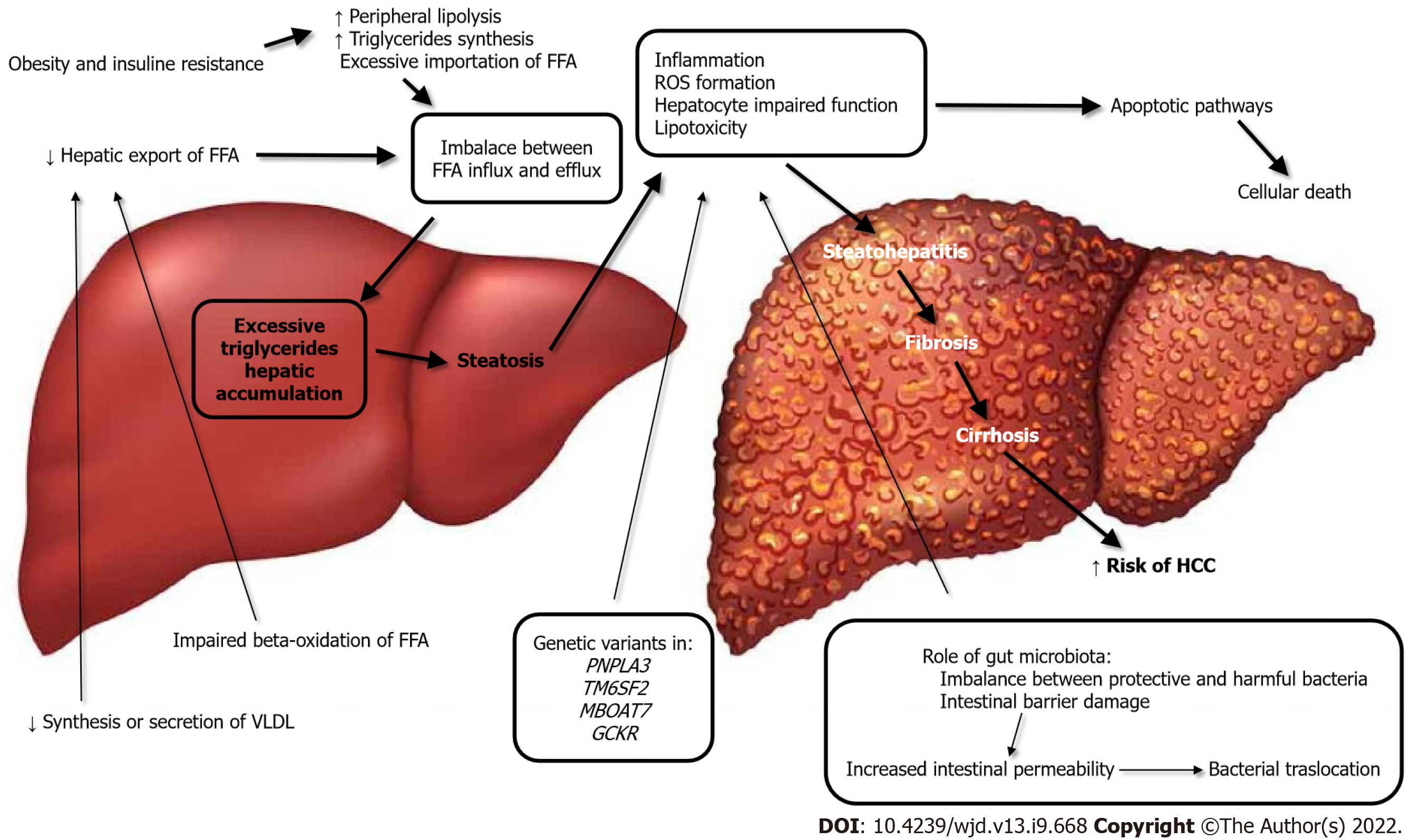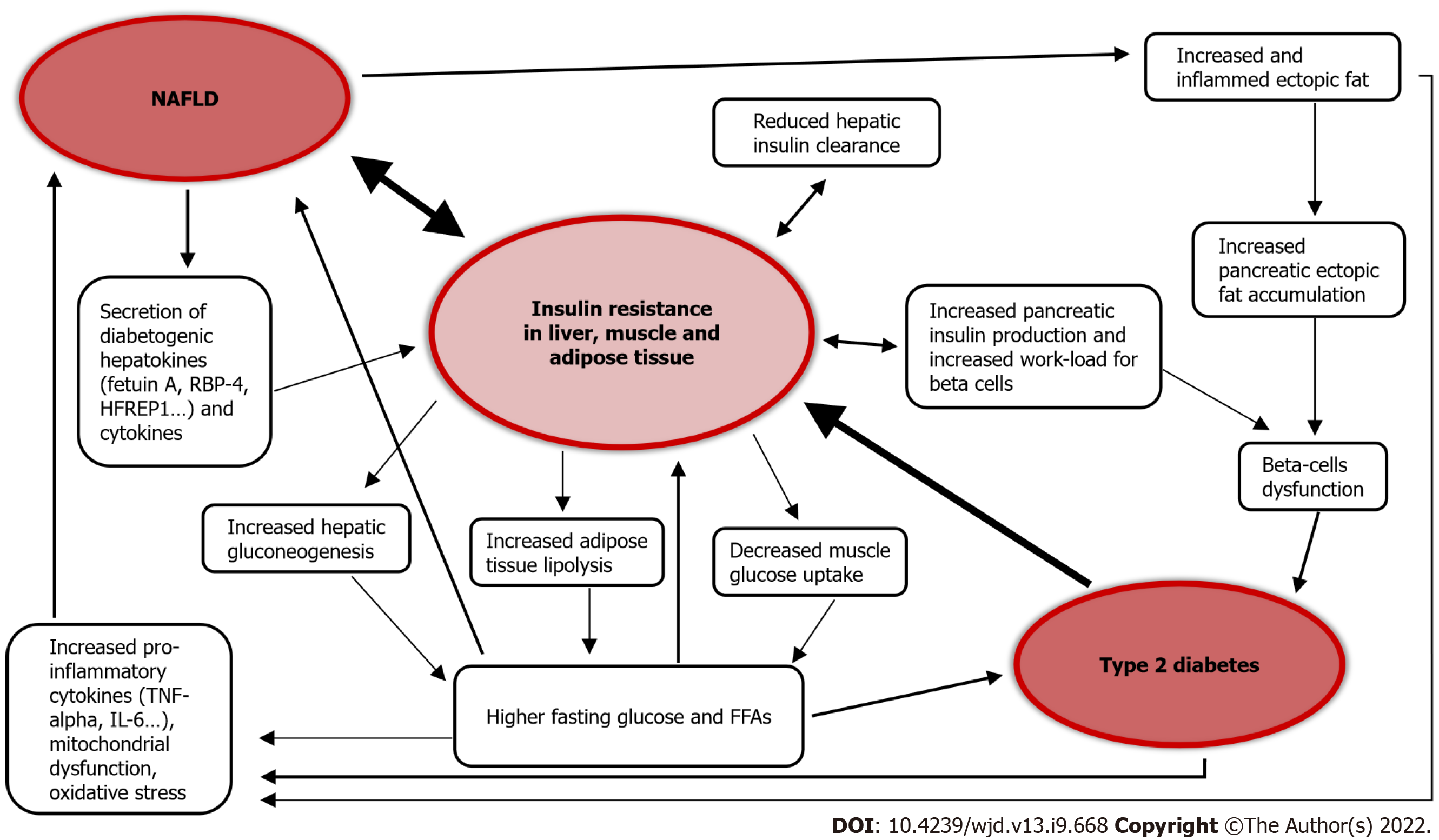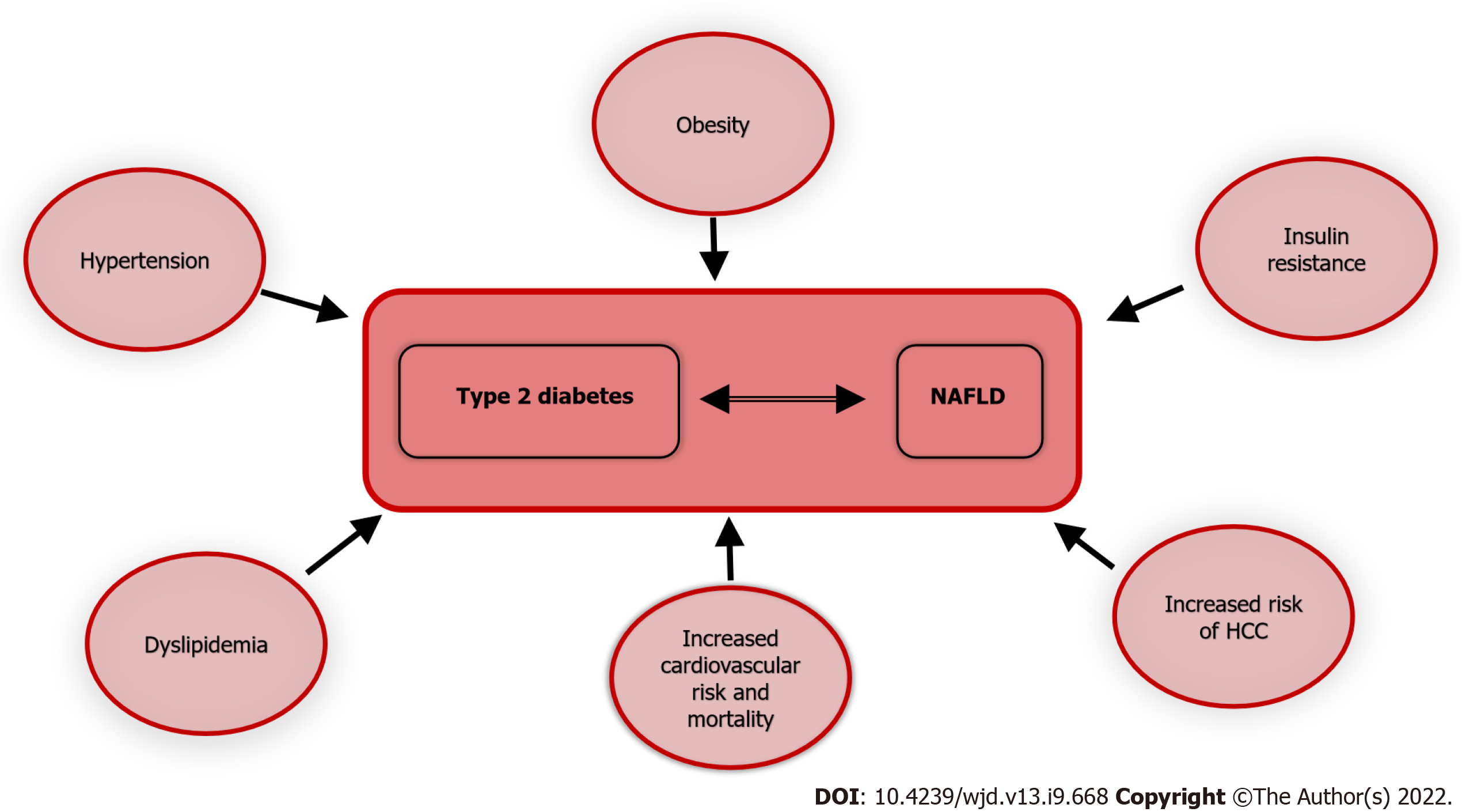Copyright
©The Author(s) 2022.
World J Diabetes. Sep 15, 2022; 13(9): 668-682
Published online Sep 15, 2022. doi: 10.4239/wjd.v13.i9.668
Published online Sep 15, 2022. doi: 10.4239/wjd.v13.i9.668
Figure 1 Pathogenesis and evolution of nonalcoholic fatty liver disease.
FFA: Fatty free acids; HCC: Hepatocellular carcinoma; ROS: Reactive oxygen species; VLDL: Very low-density lipoprotein.
Figure 2 The link between nonalcoholic fatty liver disease and diabetes pathogenesis.
Nonalcoholic fatty liver disease increases the risk of developing type 2 diabetes mainly through worsening insulin resistance and increasing gluconeogenesis. By contrast, type 2 diabetes increases the risk of developing liver steatosis and fibrosis through insulin resistance, oxidative stress, and inflammatory cytokines.
Figure 3 Type 2 diabetes and nonalcoholic fatty liver disease are both associated with multiple metabolic and cardiovascular morbidities.
Furthermore, the presence of one increases the risk to develop the other and thus exacerbating the overall prognosis. HCC: Hepatocellular carcinoma; NAFLD: Nonalcoholic fatty liver disease.
- Citation: Bellini MI, Urciuoli I, Del Gaudio G, Polti G, Iannetti G, Gangitano E, Lori E, Lubrano C, Cantisani V, Sorrenti S, D’Andrea V. Nonalcoholic fatty liver disease and diabetes. World J Diabetes 2022; 13(9): 668-682
- URL: https://www.wjgnet.com/1948-9358/full/v13/i9/668.htm
- DOI: https://dx.doi.org/10.4239/wjd.v13.i9.668











